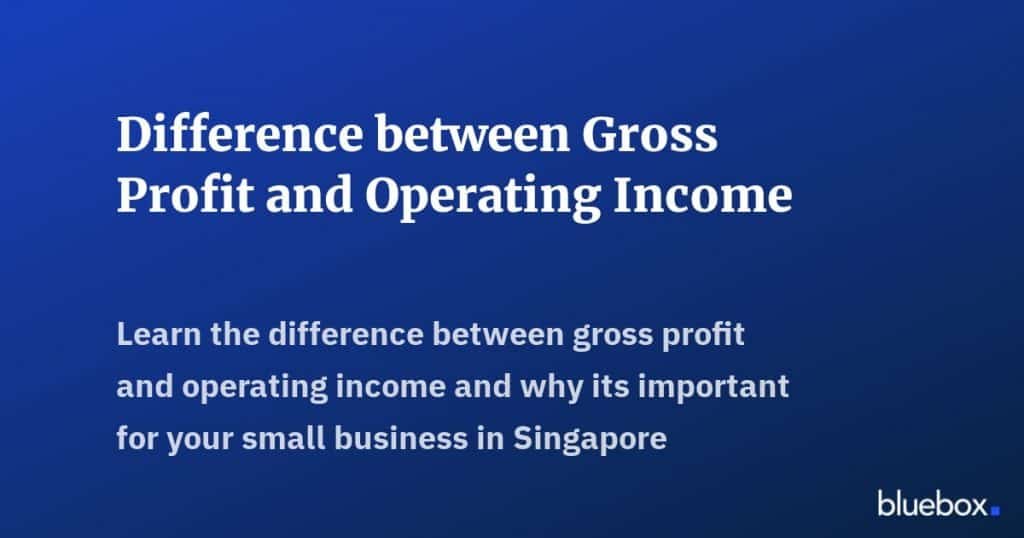As a small business owner in Singapore, it’s important to understand the financial metrics that drive your business. Two key metrics that often get confused are gross profit and operating income. While both are important indicators of your business’s financial health, they have different meanings and uses. In this article, we’ll explore the difference between gross profit and operating income, and how to calculate and interpret them.
What is Gross Profit?
Gross profit is the revenue your business generates minus the cost of goods sold (COGS). COGS includes the direct costs associated with producing and delivering your products or services, such as materials, labor, and shipping. Gross profit is a measure of how efficiently your business is producing and selling its products or services. It does not take into account indirect costs such as rent, utilities, or marketing expenses.
Calculating gross profit is straightforward. Simply subtract your COGS from your revenue. For example, if your business generates $100,000 in revenue and has $60,000 in COGS, your gross profit is $40,000. This means that for every dollar of revenue, your business keeps 40 cents after accounting for the direct costs of production and delivery.
What is Operating Income?
Operating income, also known as earnings before interest and taxes (EBIT), is a measure of your business’s profitability after accounting for all operating expenses. Operating expenses include both direct costs such as COGS and indirect costs such as rent, utilities, marketing, and salaries. Operating income is a more comprehensive measure of your business’s financial health than gross profit because it takes into account all expenses, not just those directly related to production and delivery.
To calculate operating income, subtract all operating expenses from your revenue. For example, if your business generates $100,000 in revenue, has $60,000 in COGS, and $20,000 in operating expenses, your operating income is $20,000. This means that for every dollar of revenue, your business keeps 20 cents after accounting for all operating expenses, including indirect costs.
The operating income formula is as follows:
Operating Income = Gross Profit – Operating Expenses
Why is the Difference Important?
The difference between gross profit and operating income is important because it reflects the different types of expenses that your business incurs. Gross profit is a measure of your business’s efficiency in producing and selling its products or services. Operating income is a measure of your business’s overall profitability after accounting for all expenses. Understanding the difference between these metrics can help you identify areas where you can improve your business’s efficiency and profitability.
For example, if your gross profit margin is low, it may indicate that your business is not pricing its products or services correctly, or that it has inefficiencies in its production or delivery processes. On the other hand, if your operating income margin is low, it may indicate that your business is spending too much on indirect costs such as rent, utilities, or marketing, or that it is not generating enough revenue to cover its expenses.
Operating Income vs Net Income
It’s important to note that operating income is not the same as net income. Net income is your business’s total revenue minus all expenses, including taxes and interest. Operating income only takes into account operating expenses, while net income accounts for all expenses.
Operating Revenue
Operating revenue refers to the revenue your business earns from its core operations. This excludes revenue from investments or other non-operating sources. Operating revenue is used to calculate gross profit and other financial metrics related to your business’s operations.
In conclusion, as a small business owner in Singapore, understanding the difference between gross profit and operating income is essential for managing your business’s financial health. Gross profit measures your business’s efficiency in producing and selling its products or services, while operating income measures your business’s overall profitability after accounting for all expenses. By calculating and interpreting these metrics, you can identify areas for improvement and make informed decisions about pricing, production, and expenses.
